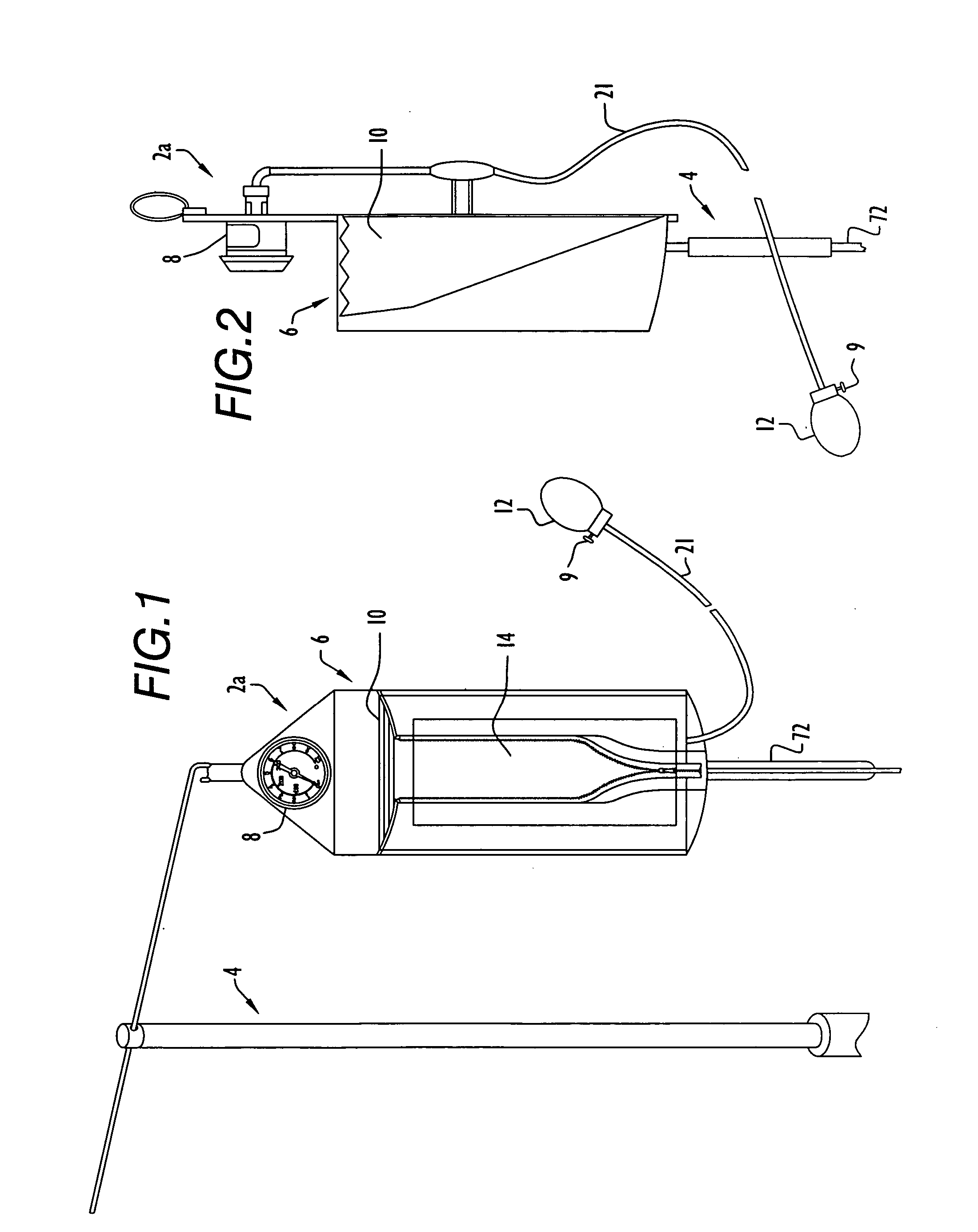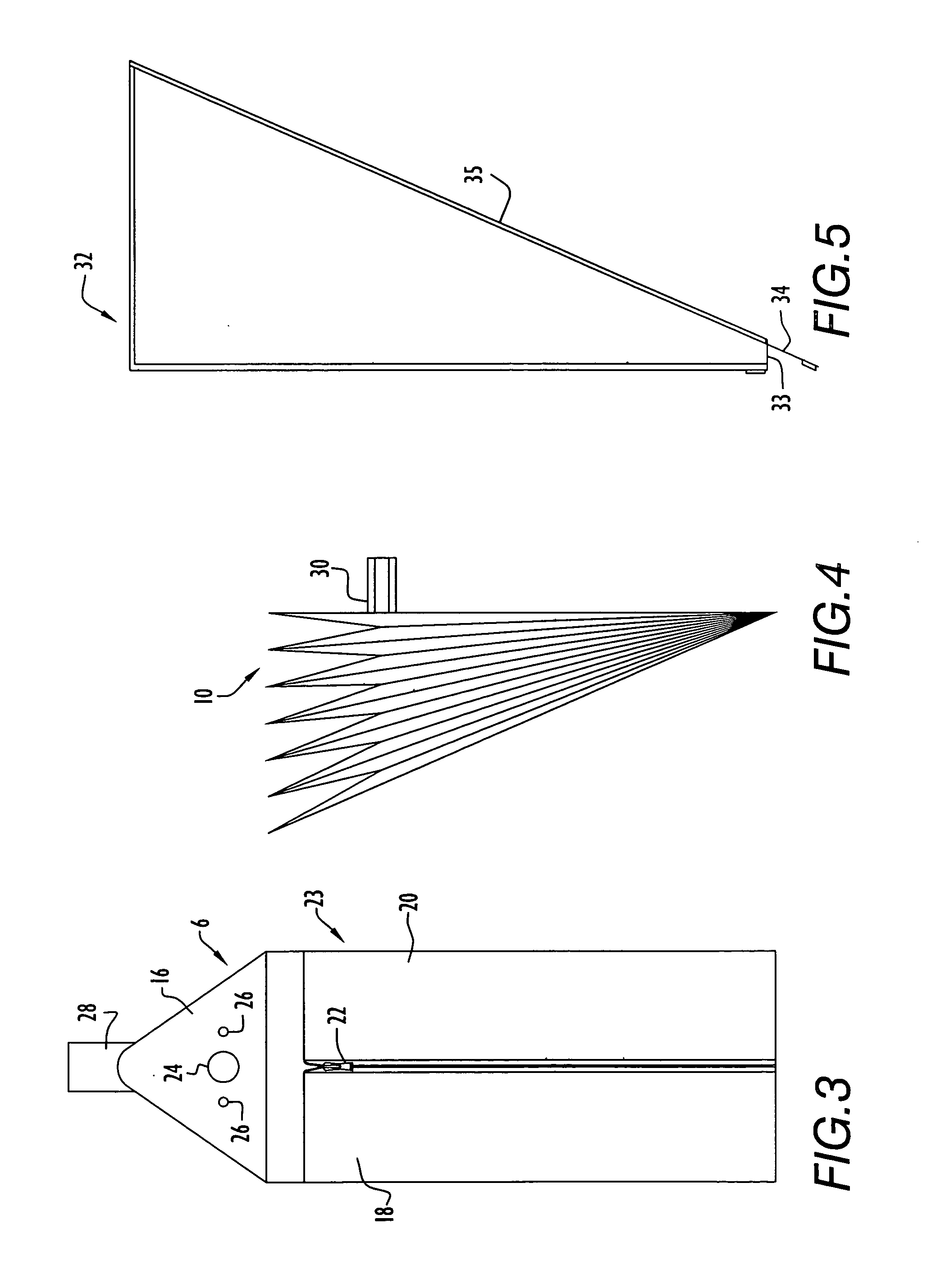Method and apparatus for pressure infusion and temperature control of infused liquids
a technology of temperature control apparatus and infused liquid, which is applied in the direction of process and machine control, contraceptive devices, instruments, etc., can solve the problems of insufficient gravity force to drive certain viscous liquids, insufficient expansion of the bladder to apply adequate pressure to the liquid-filled bag, and inability to operate efficiently. to achieve accurate temperature measurement
- Summary
- Abstract
- Description
- Claims
- Application Information
AI Technical Summary
Problems solved by technology
Method used
Image
Examples
Embodiment Construction
[0049] A pressurized infusion apparatus or system for irrigating a patient or directing infused liquids into a patient is illustrated in FIGS. 1-2. Specifically, system 2a is typically mounted on a conventional intravenous (I.V.) pole 4 and includes a receptacle 6 for containing intravenous solution or other liquid and engaging pole 4, a pressure gauge 8, an inflatable pressure device or bellows 10, a bulb 12 for regulating fluid pressure within the bellows via a hose 21, and an intravenous or other tube 72 for directing liquid from the receptacle to a patient. Receptacle 6 typically receives a liquid-filled bag 14 (e.g., a bag containing intravenous solution or other liquid) and bellows 10 wherein the bellows is disposed within a bellows bag 32 (FIG. 5) and positioned adjacent the liquid-filled bag. Hose 21 extends between bellows 10 and bulb 12 wherein manipulation of the bulb drives fluid into or from the bellows through hose 21. Hose 21 is typically implemented by a conventional...
PUM
 Login to View More
Login to View More Abstract
Description
Claims
Application Information
 Login to View More
Login to View More - R&D
- Intellectual Property
- Life Sciences
- Materials
- Tech Scout
- Unparalleled Data Quality
- Higher Quality Content
- 60% Fewer Hallucinations
Browse by: Latest US Patents, China's latest patents, Technical Efficacy Thesaurus, Application Domain, Technology Topic, Popular Technical Reports.
© 2025 PatSnap. All rights reserved.Legal|Privacy policy|Modern Slavery Act Transparency Statement|Sitemap|About US| Contact US: help@patsnap.com



